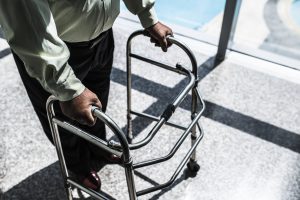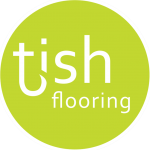Flooring with Accessibility in Mind
Many of us have a family member with mobility issues – whether it be a grandparent, parent, or sibling. Circumstances vary widely; from moderate impairment to required use of crutches, walkers and wheelchairs. For these reasons, accessibility features have become a rapidly increasing focus among those in the home remodeling industry. And flooring may be one of the most important considerations. So let’s go over a few ways you can make your space more inviting and easy to navigate for those with mobility challenges.

Carpets – Short and Sweet
Carpet is a natural choice for those needing a forgiving surface underfoot. Not only do you have a softer landing in the event of a slip or fall, but carpet provides traction making it easier to maintain footing compared to other surfaces.
For those with diminished mobility, the shorter the carpet pile height, the better. Thick plush carpet can contribute to falls for those who drag or shuffle their feet while walking. Shoe soles, canes or walkers can “catch” on deeper pile carpets. And manually operated wheelchairs are especially difficult to operate over high profile carpet and pad as well. So it is best to stick with short, dense carpet styles. The best option for those with advanced mobility concerns is to go with a carpet that can be fully adhered directly to the floor substrate (no padding) or a commercial type carpet that can be “double-glued” – this means the carpet is adhered to a thin, dense commercial quality pad and the pad is fully adhered to the floor substrate. These methods are also typical of commercial carpet installations.
For a great short pile carpet, take a look at Healthy Touch Sculptures carpet by Beaulieu.
Cork, Tile and More Accessibility-Friendly Options
Though carpet may be preferable for applications where warmth and softness underfoot are top priorities, you likely don’t need or want carpet in every room. When it comes to hard surface flooring options, traction is the number one priority to keep in mind for accessibility. If tile is your first choice, look into textured tiles with smaller individual tile sizes – say 10” x 10” or 13” x 13” for living areas or 4” x 4” to 8” x 8” for bathroom floors . Not only will the texture provide for more traction, but the increased grout lines will help feet “grip” the floor, allowing for more stability.
For families concerned about walking aids or wheelchairs tracking in water or dirt who still want to maintain a softer surface, cork flooring is an interesting alternative. Cork floor is a good choice for accessibility concerns because it offers the visual richness of a natural product, easy and limited maintenance, and is softer than solid hardwood or tile. Plus, cork has panache and style!
Transitions
Though choosing the correct flooring type is important for someone with mobility concerns, consider that transitions (areas where one floor ends and another starts, usually at the boundary between rooms or connecting hallways, etc.), can be particularly tricky. Be sure to ask your flooring professional how to install the new flooring in a manner that eliminates or minimizes any transition areas that might pose a tripping hazard.
At Tish Flooring, personalized customer service has always been our calling card, and that includes making sure our customers are directed to the flooring type that will offer the highest quality, satisfaction and safety. If you have concerns about your flooring project or that of a family member, we’re more than happy to talk about your options. Set up your free in-home consultation with a Tish pro today!

